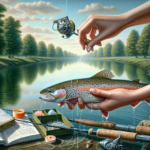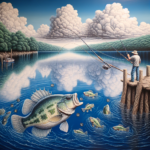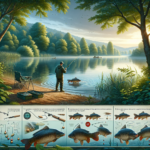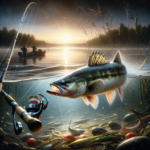Fishing Tips on How to Catch Walleye
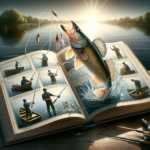
Introduction
Walleye, known scientifically as Sander vitreus, is a highly sought-after species in the world of sport and recreational fishing. Renowned for their elusive nature and delectable taste, walleyes are a prized catch for anglers of all skill levels. This article aims to provide a comprehensive guide on how to catch walleye, covering everything from their physical characteristics and behavior to the best fishing techniques and gear recommendations.
Fish Species Overview
Description
Walleye are easily recognizable by their olive and gold coloration, with a white belly and a distinctive dark spot at the base of their dorsal fin. They typically range in size from 14 to 28 inches, though trophy-sized walleyes can exceed 30 inches and weigh over 10 pounds. Their eyes are large and reflective, adapted for low-light conditions, which is a key factor in their feeding behavior.
Habitat
Walleye are freshwater fish that prefer cool, clear waters. They are commonly found in large lakes, reservoirs, and rivers across North America, particularly in the northern United States and Canada. They thrive in environments with rocky or sandy bottoms and are often found near structures such as submerged logs, weed beds, and drop-offs.
Behavior
Walleye are primarily nocturnal feeders, taking advantage of their superior night vision to hunt in low-light conditions. Their diet consists mainly of smaller fish, insects, and crustaceans. Spawning occurs in the spring when water temperatures reach around 45-50°F. During this time, walleyes migrate to shallow, gravelly areas to lay their eggs.
Challenges
One of the main challenges anglers face when targeting walleye is their elusive nature. Their preference for low-light conditions means they are often most active during dawn, dusk, and nighttime, making them harder to locate and catch during the day. Additionally, their tendency to inhabit deeper waters and structures can make them difficult to reach without the right equipment and techniques.
Best Time to Catch Walleye
Seasonal Considerations
The best time to catch walleye varies by region, but generally, spring and fall are considered prime seasons. In the spring, walleyes are more accessible as they move to shallow waters for spawning. Fall is another excellent time as they feed aggressively to prepare for winter.
Time of Day
Walleye are most active during low-light periods, making early morning, late afternoon, and nighttime the best times to fish for them. During these times, they move closer to shore and become more aggressive in their feeding.
Weather Conditions
Cloudy days with calm waters are ideal for walleye fishing. Overcast conditions reduce light penetration, aligning with the walleye’s preference for low-light environments. Additionally, stable weather patterns tend to keep walleyes more predictable in their behavior.
Top Fishing Techniques for Walleye
Jigging
Jigging is one of the most effective techniques for catching walleye. This involves using a weighted jig head paired with a soft plastic bait or live bait. The jig is cast out and then retrieved with a series of short, sharp jerks to mimic the movement of prey. This technique is particularly effective in deeper waters and around structures.
Bottom Bouncing
Bottom bouncing involves using a weighted rig to keep the bait close to the bottom while drifting or trolling. This technique is effective in rivers and lakes with varying depths and structures. It allows the bait to move naturally with the current, enticing walleyes to strike.
Trolling
Trolling involves dragging lures or bait behind a moving boat. This technique covers a large area and is effective for locating active walleyes. Using crankbaits, spinner rigs, or live bait rigs can yield excellent results. Adjusting the trolling speed and depth is crucial to match the walleye’s feeding zone.
Pro Tips
- Use electronics: Fish finders and sonar can help locate schools of walleye and identify structures where they might be hiding.
- Match the hatch: Use baits that resemble the natural prey in the area to increase your chances of a strike.
- Vary your retrieve: Experiment with different retrieval speeds and patterns to find what triggers a bite.
Recommended Gear for Catching Walleye
Fishing Rod and Reel
A medium to medium-light spinning rod paired with a spinning reel is ideal for walleye fishing. The rod should be sensitive enough to detect subtle bites but strong enough to handle larger fish. A 6-7 foot rod is a good all-around choice.
Fishing Line
Braided line with a fluorocarbon leader is a popular choice for walleye fishing. A 10-15 lb braided line provides strength and sensitivity, while a 6-10 lb fluorocarbon leader offers invisibility in clear waters.
Hooks and Baits
For live bait, use size 4 to 6 hooks. Popular live baits include minnows, leeches, and nightcrawlers. For artificial baits, jigs, crankbaits, and soft plastics in natural colors work well. Experiment with different sizes and colors to match the local forage.
Additional Gear
- Bobbers: Useful for suspending bait at a specific depth.
- Sinkers: Essential for bottom bouncing and keeping bait near the bottom.
- Leaders: Fluorocarbon leaders help prevent line visibility and abrasion from walleye teeth.
Best Locations to Find Walleye
General Locations
Walleye are commonly found in large lakes, reservoirs, and rivers. They prefer areas with rocky or sandy bottoms and are often found near structures such as submerged logs, weed beds, and drop-offs.
Specific Regions
Some of the best regions for walleye fishing include the Great Lakes, particularly Lake Erie and Lake Ontario, as well as the Mississippi River, Lake of the Woods, and the Canadian Shield lakes. These areas are known for their healthy walleye populations and offer excellent fishing opportunities.
Common Mistakes to Avoid
Using the Wrong Gear
Using gear that is too heavy or too light can hinder your success. Ensure you have the appropriate rod, reel, line, and hooks for walleye fishing.
Fishing at the Wrong Time
Walleye are most active during low-light periods. Avoid fishing during the middle of the day when they are less likely to be feeding.
Ignoring Structure
Walleye often hide near structures such as rocks, weed beds, and drop-offs. Failing to target these areas can significantly reduce your chances of catching them.
Catch and Release Tips
Importance of Conservation
Practicing catch and release helps maintain healthy walleye populations and ensures future generations can enjoy this sport. Ethical fishing practices are crucial for conservation.
Proper Handling Techniques
- Use wet hands: Wet your hands before handling the fish to protect its slime coat.
- Minimize air exposure: Keep the fish in the water as much as possible and avoid prolonged air exposure.
- Use proper tools: Use a dehooking tool or pliers to remove hooks quickly and safely.
Legal Considerations
Be aware of local regulations regarding size limits, bag limits, and protected areas. Ensure you have the necessary fishing licenses and permits.
Frequently Asked Questions (FAQs)
What is the best bait for catching walleye?
The best bait for walleye varies by season and location. Live baits such as minnows, leeches, and nightcrawlers are highly effective. Artificial baits like jigs, crankbaits, and soft plastics in natural colors also work well.
Where is the best place to fish for walleye?
Walleye are commonly found in large lakes, reservoirs, and rivers with rocky or sandy bottoms. Popular fishing spots include the Great Lakes, Mississippi River, Lake of the Woods, and Canadian Shield lakes.
What time of day is best for catching walleye?
Walleye are most active during low-light periods, making early morning, late afternoon, and nighttime the best times to fish for them.
What type of fishing line should I use for walleye?
A braided line with a fluorocarbon leader is recommended. A 10-15 lb braided line provides strength and sensitivity, while a 6-10 lb fluorocarbon leader offers invisibility in clear waters.
Do I need a special fishing license to catch walleye?
Fishing license requirements vary by region. Check local regulations for specific licensing requirements, size limits, bag limits, and any special permits needed.
What is the best technique for catching walleye?
Jigging, bottom bouncing, and trolling are among the most effective techniques for catching walleye. Each technique has its advantages depending on the fishing conditions and location.
Are there any specific weather conditions that improve the chances of catching walleye?
Cloudy days with calm waters are ideal for walleye fishing. Overcast conditions reduce light penetration, aligning with the walleye’s preference for low-light environments.
Can I catch walleye from the shore, or do I need a boat?
Walleye can be caught from both shore and boat. Shore fishing is effective during low-light periods when walleyes move closer to shore. A boat allows access to deeper waters and structures where walleyes may be hiding.
How can I improve my chances of landing a big walleye?
To catch larger walleyes, use bigger baits and target deeper waters and structures. Fishing during prime seasons (spring and fall) and low-light periods can also increase your chances of landing a trophy-sized walleye.
What should I do if I plan to release walleye after catching them?
Practice ethical catch and release by using wet hands, minimizing air exposure, and using proper tools to remove hooks quickly and safely. Follow local regulations regarding size limits and protected areas.
Conclusion
Walleye fishing offers a rewarding challenge for anglers of all skill levels. By understanding their behavior, using the right techniques and gear, and practicing ethical fishing practices, you can increase your chances of success. Whether you’re a seasoned angler or a beginner, these tips will help you catch more walleye and enjoy the thrill of this popular sport. So grab your gear, head to your favorite fishing spot, and put these tips into practice. Happy fishing!

